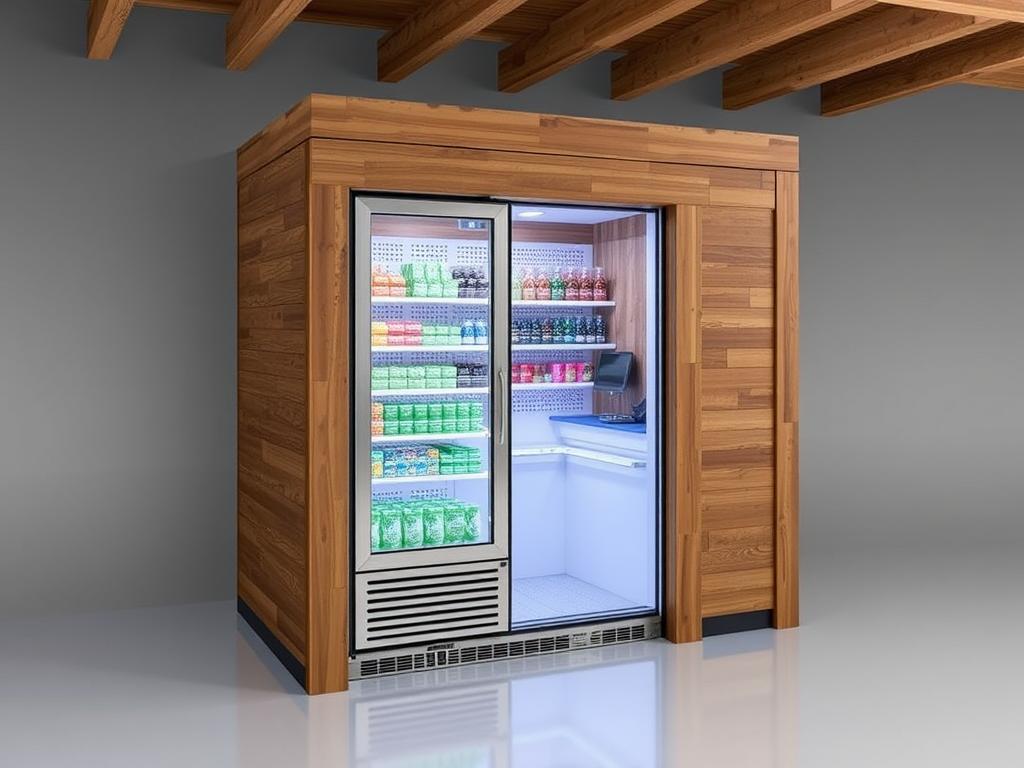Imagine walking into a cool, spacious room where the temperature stays perfectly consistent, and every piece of fresh produce or perishable item is kept at its optimal condition. That’s exactly what a walk-in cooler offers — a game-changer for restaurants, hotels, cafes, and foodservice businesses. But designing, building, or upgrading a walk-in cooler isn’t just about buying a freezer and plugging it in; it’s a complex process that influences your operations, food safety, and even your bottom line. In this article, we’ll explore everything you need to know about walk-in coolers, from their importance for your business to practical tips on construction, modernization, and maintenance.
Why Is a Walk-In Cooler Essential for Food Service Businesses?
For any establishment that handles large quantities of perishable goods, space is a vital consideration. A walk-in cooler is more than just a storage unit – it’s an investment in food safety, efficiency, and customer satisfaction. With a walk-in cooler, you get the benefit of:
– **Ample storage space** for fruits, vegetables, dairy, and meats
– **Temperature control** to ensure food stays fresh longer
– **Organization** opportunities, making your staff’s job easier and more efficient
– **Reduced waste** by maintaining proper storage conditions
– **Compliance** with health and safety regulations
So if you’re running a busy restaurant, hotel kitchen, or café, having a dedicated walk-in cooler means your ingredients are accessible and preserved just right, helping you serve high-quality dishes every time.
Design and Construction Considerations
Creating a reliable and efficient walk-in cooler isn’t simply about choosing the right size and adding insulation. It requires careful planning and understanding of various factors to ensure longevity and performance.
Size and Capacity
Before starting construction, think about your current and future needs. Do you need space for only perishable vegetables and dairy? Or do you store large quantities of meat and frozen goods? Make a list of your typical inventory, then add some extra space to account for future growth.
**Tip:** Use tables like the one below to evaluate storage needs:
| Item Category | Average Storage Volume | Estimated Growth | Total Capacity Needed |
|---|---|---|---|
| Fruits & Vegetables | 50 ft³ | 10% | 55 ft³ |
| Dairy | 30 ft³ | 15% | 35 ft³ |
| Meat & Seafood | 70 ft³ | 20% | 84 ft³ |
Insulation and Material Selection
Good insulation is the backbone of an efficient walk-in cooler. Options like polyurethane foam and polystyrene are popular because of their excellent thermal properties. Remember, walls, ceiling, and floor should be properly insulated to prevent energy loss and condensation issues. The materials used should also resist corrosion and be easy to clean, ensuring hygiene standards are met.
Door Type and Sealing
Choosing the right door is crucial. Prefer heavy-duty insulated doors with secure seals to prevent warm air infiltration. Consider models with self-closing hinges and threshold seals that maintain constant temperature inside. For added convenience, doors with windows or pass-through sections can streamline operations.
Modernization and Upgrades
If your existing walk-in cooler is outdated or inefficient, modernization can save you both money and headaches. Upgrading components like refrigeration systems, lighting, and insulation can improve performance significantly.
Refrigeration Systems
Old compressors or refrigerant leaks can cause uneven temperatures and higher energy bills. Modern systems incorporate energy-efficient compressors, digital thermostats, and environmentally friendly refrigerants like R134a or R600a. Upgrading your refrigeration not only saves money but also ensures your food stays fresh longer.
Lighting and Ventilation
LED lighting provides bright, energy-saving illumination inside the cooler without generating excess heat. Ventilation fans can help circulate cold air evenly, preventing hotspots and ensuring consistent temperature throughout the space.
Door and Seal Upgrades
High-quality sealing can be added or replaced to improve insulation. Upgrading to automatic door closers or installing low-E glass windows can also contribute to better energy efficiency.
Maintenance Tips for Longevity
To get the most out of your walk-in cooler, regular maintenance is key. Check cooling systems periodically, clean condenser coils, and ensure door seals are tight. Keep an eye on temperature gauges and address issues immediately to avoid food spoilage or larger repairs.
Conclusion
A walk-in cooler can seem like a straightforward piece of equipment, but in reality, it’s a crucial part of your food safety and operational efficiency. Whether you are constructing a new unit, upgrading an existing one, or simply maintaining your cool space, paying attention to details like insulation, refrigeration efficiency, and organization can make a world of difference. When designed and maintained properly, your walk-in cooler will serve as a reliable workhorse, helping your business thrive by keeping ingredients fresh, reducing waste, and ensuring compliance with food safety standards.
Are you considering building or modernizing your walk-in cooler? Take the time to plan carefully, consult with experts, and choose quality materials. Your investment will pay off through improved efficiency, reduced costs, and happier customers who appreciate the quality and freshness of your offerings.
